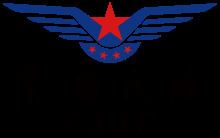Formed 1949 Website www.caac.gov.cn Founded 1949 | Parent agency Ministry of Transport | |
 | ||
Jurisdiction People's Republic of China Agency executive Feng Zhenglin, Administrator of CAAC Similar 1990 Guangzhou Baiyun ai, Malaysia Airlines Flight 370, Henan Airlines Flight 8387, Air China Flight 129 | ||
The Civil Aviation Administration of China (CAAC; simplified Chinese: 中国民用航空局; traditional Chinese: 中國民用航空局; pinyin: Zhōngguó Mínyòng Hángkōng Jú), formerly the General Administration of Civil Aviation of China (simplified Chinese: 中国民用航空总局; traditional Chinese: 中國民用航空總局; pinyin: Zhōngguó Mínyòng Hángkōng Zǒngjú), is the aviation authority under the Ministry of Transport of the People's Republic of China. It oversees civil aviation and investigates aviation accidents and incidents. As the aviation authority responsible for China, it concludes civil aviation agreements with other aviation authorities, including those of the Special Administrative Regions of the People's Republic of China which are categorized as "special domestic". The agency is headquartered in Dongcheng District, Beijing.
Contents
- History
- CAAC as an airline
- Separation
- CAACs fleet in 1987
- General aviation
- Fleet retired before 1987
- Major incidents
- Affiliated universities
- References
The CAAC does not share the responsibility of managing China's airspace with the Central Military Commission under the regulations in the Civil Aviation Law of the People's Republic of China (中华人民共和国民用航空法, Zhōnghuá Rénmín Gònghéguó Mínyòng Hángkōng Fǎ).
History
CAAC was formed on November 2, 1949, shortly after the founding of the People's Republic of China, to manage all non-military aviation in the country, as well as provide general and commercial flight service (similar to Aeroflot in the Soviet Union). It was initially managed by the People's Liberation Army Air Force.
In 1963, China departed from its policies of Marxist self-sufficiency with a purchase of six Vickers Viscount aircraft from Great Britain, followed in 1971 with four Hawker Siddeley Trident aircraft from Pakistan International Airlines. In August 1971 the airline purchased six Trident 2E's directly from Hawker Siddeley. The country also placed provisional orders for three Concorde aircraft. With the 1972 Nixon visit to China the country ordered 10 Boeing 707 jets. In December 1973 it took the unprecedented step of borrowing £40 million from Western banks to fund the purchase of 15 additional Trident jets. Russian built Ilyushin Il-62 aircraft were used on long range routes during the 1970s and 1980s.
In 1980 the airline was transferred to the direct control of the State Council.
In 1987 the airline division of CAAC was divided up into a number of airlines, each named after the region of China where it had its hub. Since then, CAAC acts solely as a government agency and no longer provides commercial flight service.
In March 2008, CAAC was made a subsidiary of the newly created Ministry of Transport, and its official Chinese name was slightly adjusted to reflect it being no longer a ministry-level agency. Its official English name has remained Civil Aviation Administration of China.
CAAC as an airline
CAAC began operating scheduled domestic flights to cities in China in 1949.
In 1962, CAAC began operating international services, initially to other countries in the Communist bloc such as the Soviet Union, Mongolia, North Korea, Burma, Bangladesh, North Vietnam, and Cambodia. By the mid-1980s, CAAC had long-haul service to the United States, Europe, the Middle East, and Australia, mainly using American Boeing aircraft, while continuing to use Soviet aircraft on routes to Eastern Europe.
The Boeing customer code for CAAC was J6, which was inherited by Air China until 1999.
Separation
In 1987, CAAC's airline operations split into six separate airlines, each named after the geographic region of the location of their headquarters and main operatiing areas:
CAAC used the IATA code CA on international flights only; domestic flights were not prefixed with the airline code.
CAAC aircraft livery featured Chinese national flag on the vertical stabilizer, with blue stripes and Chinese version of CAAC logo (autographed by Zhou Enlai) on a white fuselage.
